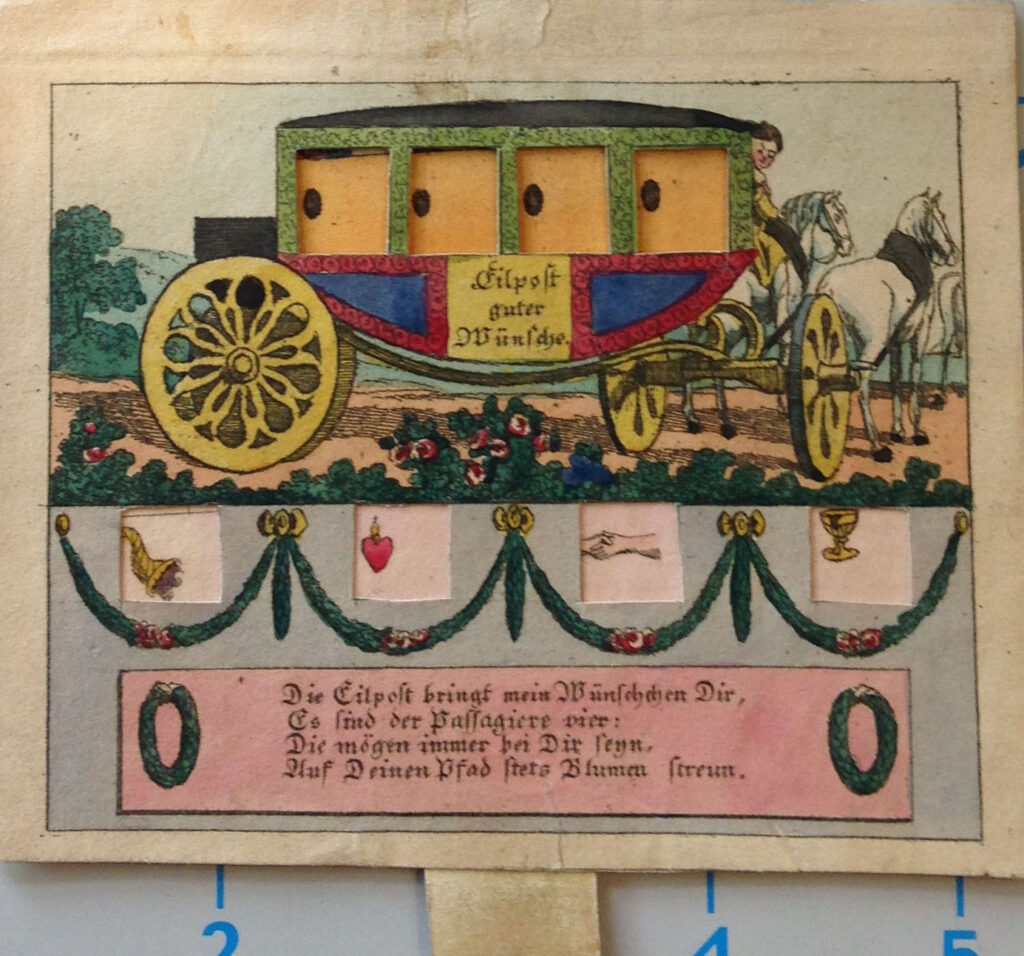
Biedermeier Greeting Cards
The new Newman Tower of Exploration and Collections has provided the Julian Edison Department of Special Collections with a unique chance to share some of our most treasured collections with the public. With this exhibition, we highlight a beautiful collection of Biedermeier greeting cards exchanged between German family members in the early 19th century.
Intricate Greeting Cards with Moving Parts
In the late 18th and early 19th centuries in Germany and Austria, it was popular to send greeting cards on holidays and to express thanks and feelings of friendship. The cards in this exhibition come from the Biedermeier period and provide wonderful examples of paper engineering. Pull the tabs on one and carriage windows open to reveal the people inside. Another, a thank-you card, has a girl in a traditional costume who curtsies.
The Biedermeier period in Europe spanned from the end of the Napoleonic wars in 1815 and ended with the European revolutions of 1848. This period was characterized by relative peace and a growing middle class interested in the arts and private (rather than political) activities, such as playing instruments, reading, and, of course, letter-writing. The name Biedermeier comes from a popular caricature of middle-class comfort known as “Papa Biedermeier” and was originally meant to be derogatory. Today, we view Biedermeier art as a critical transitional period between Classicism and Romanticism.
The cards in WashU Libraries’ Biedermeier Collection were originally exchanged within an extended family in the state of Saxony-Anhalt in central Germany. They are engraved and hand-colored, and many contain handwritten messages. The cards are a charming expression of the culture of sentiment among the bourgeoisie, and we can trace the family’s social ties through the messages.





